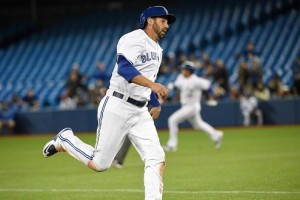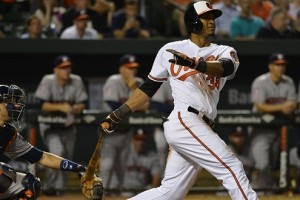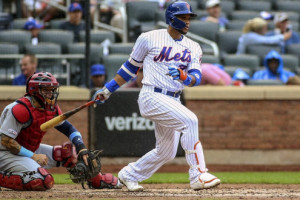The Girl Who Was Hot In High School

We can’t all be beautiful. It would be nice if we could – but come on. Let’s face it. That’s just not the way things work.
Some of us are ugly. Some of us look okay. Some of us can make ourselves look good if we try really hard. All of us have good days and bad days, of course – and some of us…well, some of us are just plain beautiful individuals.
A few weeks ago, my 15-year-old nephew ran an errand with my father-in-law, and when they returned home my mother-in-law asked him how things went. This is what he said to her:
“I realized two things when we were out. One: there are a lot of ugly people in the world. Two: I’m sure glad I’m not one of them.”
Here’s what my nephew doesn’t yet realize, though: he’s probably going to remain one of those “not ugly” individuals all his life. He has the sort of look that will translate well: girls probably think he’s good-looking now; girls will think he’s good-looking in high school, and more than likely, girls will think he’s good-looking in college and beyond. But see, there are different types of “good-looking.”
Take, for example, my other nephew – the younger brother of the one I just told you about. I doubt any girls are particularly smitten with him at the moment, and that may remain the case even through high school. But my wife and I have talked about it and established that he has a look that will translate well to college…and will translate even better to the years beyond college. He’ll be that “model-looking guy,” instead of just being “that good-looking guy’s little brother.”

And then, there’s Kris Bryant. Yeah – the baseball player. Every time I see a picture of Kris Bryant, I think, “He looks like that girl we all thought was hot in high school, but who isn’t hot once she’s an adult.”
We’ve all known people like that, haven’t we? Perhaps we dated a person like that – the person who was “really hot in high school,” but who doesn’t look all that great anymore. Sometimes, the reason this individual no longer looks great is because they stopped making an effort, and things fell apart from there. But a lot of times, you can look at someone five or 10 or 15 years after high school and think, “Huh. It’s funny that we used to all think they were attractive.” There’s just a certain look that looks good in high school… but that doesn’t look nearly as good as we mature, and as the things we look for in terms of “attractiveness” mature as a result
But looks are a funny thing. Sure, on the one hand, we can all look at different people and feel differently about them – can disagree, to a certain extent, as to who is hot and who is not – but for the most part, we as human beings are going to generally agree on who is attractive and who is unattractive. And yet, it’s never all about the way a person looks, is it?
Sometimes, a person can change their “look” (their haircut, or the way they dress) and become significantly hotter.
Other times, someone who is not actually all that hot can become “hot” simply by possessing large amounts of confidence.
You get bonus points if you have already spotted the way in which I am tying this into daily fantasy baseball…
One of the biggest issues we deal with as daily fantasy baseballers is figuring out how heavily we should weigh whether or not a hitter is “hot.” People ask me questions relating to this fairly frequently: how heavily do I weigh stats from the last couple weeks, or how heavily do I weigh stats from the last couple days? How much stock do I put in whether a hitter is hot or not?
But in the same way that “hotness” in terms of appearance is never quite as simple as saying, “Yes, this person is hot, and that person is not,” a baseball player’s “hotness” can be dependent on many factors.
Earlier this year, Jimmy Paredes was that “girl everyone thought was hot in high school, but isn’t actually hot anymore.” But high school still lasts a while, right? That girl still had a fair amount of time to shine – and so did Jimmy Paredes. If you looked too heavily at his career stats in the Minors and tried to determine how those stats should carry over to the Majors (and if you subsequently realized, “This guy’s hot hitting is fluky – he won’t be able to keep it up”), you probably lost plenty of money off of fading Paredes while everyone else was “riding the hot streak.”

The same goes for Chris Colabello at the moment, and the same went for Brock Holt for a chunk of last year. On the one hand, the logical side of things might lead you to say, “This guy is playing way over his head, and he won’t keep it up for long.” You might even say, “I’m going to be annoyed with myself for playing this guy just because he is hot.”
But let’s be honest: Are you embarrassed that you dated the “high school hot” girl or guy when you were in high school? Or do you instead say, “Yeah, I dated them – of course I did! They were hot at the time.”
Sometimes, you simply cannot “logic” your way through life. As a cerebral, analytical individual, this has been an important lesson for me to learn. Sometimes, you date the “hot person who won’t be considered hot later” because…well, because they’re freaking hot! Other times, you use the “hot hitter who isn’t actually all that good” because they’re freaking hot.
But – again – here’s the question that all of this brings up: When it comes to hitters, what constitutes “Hot”?
And of course, as with looks, there is no simple answer.
There are hitters like my older nephew – guys who should be considered “hot” even on a bad day.
There are hitters like my younger nephew – guys who have “hot potential,” but are not there at the moment.
And there are hitters like those “high school hot” individuals – guys who are hot for a while, and who will tail off eventually. But…hey, who ever got upset about the fact that they dated someone who was considered hot at the time?
If this were an article that you were going to read today, and that would then be taken down from the RotoGrinders site immediately afterward, I could tell you the specific hitters I feel can be considered “hot” at the moment. But because hotness is fleeting, and because this article goes up on the site on a Sunday and stays in place all week, it would not do you much good for me to tell you which hitters I feel are hot at the moment.
And anyway, what good is that in the long run? After all, my whole goal is to “teach you how to fish,” right? So let’s look at the big picture here. Let’s talk about some of the things I look for in determining whether or not a hitter (or – just as importantly – a lineup) is hot.
MEDIOCRE HITTERS PLAYING WELL
This is the least logical of the bunch: a guy whose career numbers are not all that good (or a young guy whose Minor League numbers are not all that good), but who has been tearing the cover off the ball over the last week or two. Should we consider this guy to be “hot”? Or should we instead discount his recent hot streak and simply play the numbers?

One of the main things to look at here, in my mind, is the hitter’s price. If a guy is batting in a premium spot in the lineup (we’ll say top 5 spots), and he’s priced low, and he’s been “hot” lately, you definitely want to give this guy a look. After all: any hitter who is “batting in a premium spot in the lineup and is priced low” needs to be considered – regardless of whether this guy is “hot” at the moment or not.
But another element that comes into play here is ownership percentage. How heavily are others weighing the “hotness” of this hitter? If you are paying attention to ownership percentages each day (hint: you always should be paying attention to ownership percentages each day), and you notice that this guy is highly-owned each day, he becomes a near must-play in cash games. After all: he’s cheap, he’s hitting in a premium spot in the lineup, and even if there is nothing quantifiable in the idea of a hitter being “hot,” this guy certainly has more confidence at the moment, right? And as we all know: confidence alone can make an individual far more attractive (or can make a hitter likelier to succeed). No, it’s not quantifiable. No, we can’t make a graph that shows the ways in which confidence correlates to performance. But we have all been there before – in one area of life or another – and we do all know that it is true.
On the other hand, however, this same player comes much closer to being a “must fade” if he has been highly-owned each day in GPPs. Why? Because: the numbers do not back up what he is doing. If you can project that a guy will be highly-owned in GPPs, you need an extremely strong and compelling reason to play him. “This guy is hot right now” is rarely a strong enough reason. Eventually, this guy’s true talent level is going to bear itself out. If you can bank on a guy being 40% owned, and you know he’s not actually as good as his recent stats have shown, there is no reason for you to jump on board out of fear you’ll miss out on a big game. Instead, side with the numbers and hope that “chasing hotness” comes back to hurt everyone else.
The final thing to look at here is a “hot hitter” as his price continues to rise. Once a guy’s price reaches the range of truly solid players, I have a hard time paying up for that guy no matter how “hot” he is. One of the great benefits of baseball is that we have Minor League numbers we can look to in order to gain an idea of MLB performance. So while things never translate directly (or even on a direct, consistent scale), we do know that a guy who hit .270 last year in the Minors with 8 home runs in 550 at bats is not suddenly going to become a .350 hitter with 30 home runs in a season. Instead, hitting stats are likely to decline, at least to some extent, between the Minors and the Majors. So unlike, say, Odell Beckham Jr. in NFL last year – where his price kept climbing, and you were stuck guessing/assessing whether or not he was really as dominant as his price suggested – we can look to Minor League stats and determine whether or not a guy is being priced far above his actual talent level. Once this occurs, I care a lot less about how “hot” a hitter is, and a lot more about the actual talent I can get for that same price looking elsewhere.
GREAT HITTERS PLAYING POORLY
Individuals who are truly and naturally attractive are going to be truly and naturally attractive even when they are having a “bad day,” right ?
Well, the same goes for elite hitters. Elite hitters do not suddenly become bad hitters because they went 0-12 over a three game span. In fact, if this has caused their price to drop, it’s almost always the right time to jump on board and roster them.

The main time I tend to stay away from “great hitters playing poorly” is when these guys have been striking out far more than normal.
If you listen to hitters talk about a hot streak or a cold streak, they will usually use the words “seeing the ball well” or “not seeing the ball well.” From a data-driven standpoint, there is no way to truly determine whether or not a guy is “seeing the ball well.” The best tool we have, then, is strikeouts.
Of course, a lot goes into this. For example: if a hitter has faced several high-K pitchers in a row, it would make sense for their strikeout rate to rise. It would also make sense for them to dip into a little mini-slump during those games, and for them to break out of it as soon as they face a non-elite pitcher.
The bigger concern for me is when a hitter has been striking out at a higher-than-normal rate, and has been doing so over a sustained period of time, or against pitchers not known for their strikeout prowess.
If an elite hitter has been striking out more than normal in these circumstances, I’ll probably stay away from him even as his price drops (unless he is in a particularly tasty matchup, or unless I start seeing his strikeouts go away – even if the concrete results are not yet there). But if an elite hitter is simply bad-lucking into a few poor games, this will not deter me from rostering him – especially not if I can get this guy at a team-friendly discount.
MEDIOCRE LINEUPS PLAYING WELL
A team has a couple months of poor performances in their back pocket…but they have suddenly been playing very well over the last couple weeks. Do we still pick on them? Do we change the way we view them? What do we do?
The first thing I like to look at (as alluded to in previous articles) is whether or not the composition of the lineup has changed. Has someone come back from injury? Has a slumping, elite hitter finally broken out of his slump? Remember: one hitter can change the complexion of an entire lineup. What was once ugly can become not-quite-so-ugly anymore, and where this lineup was once worth picking on, it may be time to stay away (or, at the very least, to not upgrade pitchers against them).
But if nothing has changed in a team, I am always going to assume that the numbers we have over the larger sample size are more fully indicative of what we can expect moving forward. I may not “upgrade” a mediocre pitcher against this team while they are “hot,” as the wave of confidence this team is riding can make them dangerous against a sub-optimal arm. But if I can match up an elite arm against a mediocre team, I am going to take that matchup no matter how “hot” this mediocre team has been.
GREAT LINEUPS PLAYING POORLY
Finally, we have perhaps the strangest one of all: an entire lineup performing poorly…even though this lineup is filled with good hitters, and has performed well throughout the year.
Because all of this is unquantifiable, we are largely dealing with guesswork in these areas. It’s a strange occurrence when a great team of hitters strings together several poor games in a row – looking entirely unlike themselves along the way. But you know what I do when this is the case? I still tend to stay away with pitchers.
I know this is certainly not “the only approach” to use here. I know there are plenty of others who will pick on a strong lineup when this lineup has been playing poorly. But I don’t want to assume that Cinderella is ugly just because she’s in her cleaning clothes, and I don’t want to assume this elite lineup is suddenly worth picking on just because they’ve had a few bad games.
TYING IT ALL TOGETHER
Ultimately, “hotness” is in the eye of the beholder. The things I look for may not be the things you look for. The things that work for me may not be the things that work for you. But apply these thoughts of mine and see what works. Start assessing how heavily you weigh “hotness” in hitters, and determine what you look for in order to decide whether you feel a hitter (or a lineup) is hot or not. Start toying around with different sample sizes, and figure out what works for you. Use my thoughts as a guide if you’d like, and devise your own system from there.
But in all this, remember: only truly attractive people can be truly attractive all the time…and only truly elite hitters can truly be considered “hot” all the time.
The rest of us are stuck trying to change our clothes or boost our confidence – hoping this will make a difference.